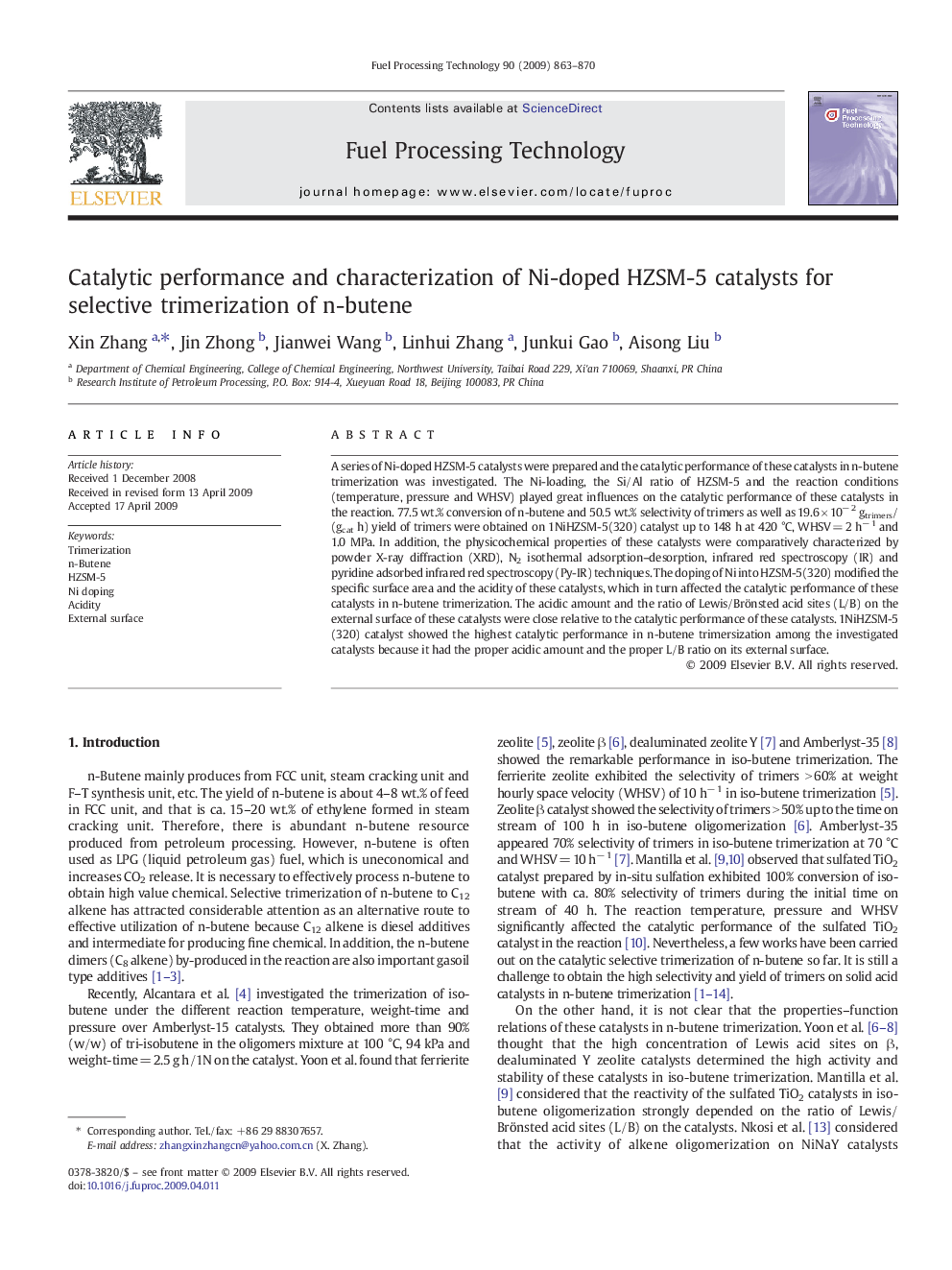| Article ID | Journal | Published Year | Pages | File Type |
|---|---|---|---|---|
| 210969 | Fuel Processing Technology | 2009 | 8 Pages |
A series of Ni-doped HZSM-5 catalysts were prepared and the catalytic performance of these catalysts in n-butene trimerization was investigated. The Ni-loading, the Si/Al ratio of HZSM-5 and the reaction conditions (temperature, pressure and WHSV) played great influences on the catalytic performance of these catalysts in the reaction. 77.5 wt.% conversion of n-butene and 50.5 wt.% selectivity of trimers as well as 19.6 × 10− 2 gtrimers/(gcat h) yield of trimers were obtained on 1NiHZSM-5(320) catalyst up to 148 h at 420 °C, WHSV = 2 h− 1 and 1.0 MPa. In addition, the physicochemical properties of these catalysts were comparatively characterized by powder X-ray diffraction (XRD), N2 isothermal adsorption–desorption, infrared red spectroscopy (IR) and pyridine adsorbed infrared red spectroscopy (Py-IR) techniques. The doping of Ni into HZSM-5(320) modified the specific surface area and the acidity of these catalysts, which in turn affected the catalytic performance of these catalysts in n-butene trimerization. The acidic amount and the ratio of Lewis/Brönsted acid sites (L/B) on the external surface of these catalysts were close relative to the catalytic performance of these catalysts. 1NiHZSM-5(320) catalyst showed the highest catalytic performance in n-butene trimersization among the investigated catalysts because it had the proper acidic amount and the proper L/B ratio on its external surface.
